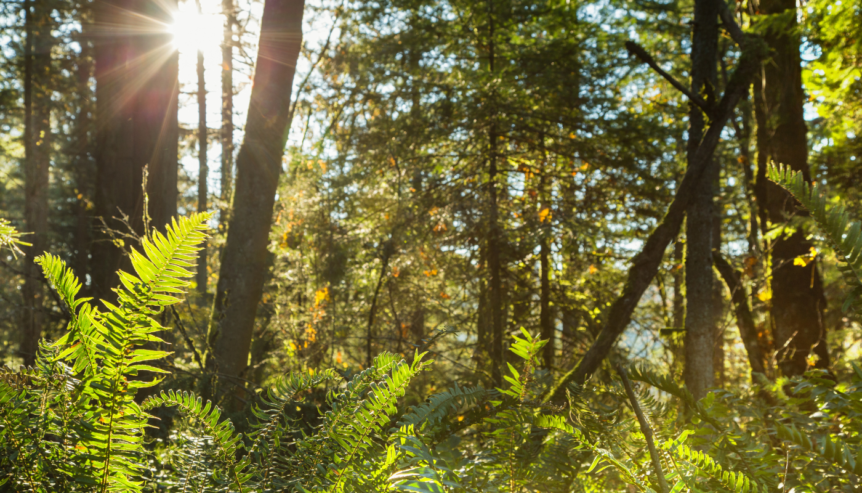The following is the opinion of the Forest Park Conservancy. Written by Carole Hardy, Forest Park Conservancy Board Member, Forest Ecologist.
PGE’s revised land-use application filed with the City of Portland proposes to clear cut 4.7 acres of 150+ year old Douglas fir and bigleaf maple trees and proposes to remove 5 white oak trees estimated to be 170-500 years old. In total, the proposal includes the removal of 376 living trees, and 21 dead trees. It will permanently fill at least two wetlands and disrupts two streams that support multiple species of aquatic wildlife.
According to PGE. Phase 5 of this project may impact another 15 acres of Forest Park to the northwest and west potentially disrupting the Miller Creek watershed which contains salmon habitat. Should Phase 3 be approved, it will pave the way to Phase 5 as the “least expensive” alternative. PGE has been vague with the details on Phase 5.
You may read the plan here.
Alternatives Not Fully Explored: Legally, PGE must comply with the city of Portland’s Forest Park Natural Resources Management Plan (FPNRMP) unless there is NO alternative to meet their obligation to provide reliable power to the people of the region. (Note: This area of land lies within the City’s Environmental Conservation and Environmental Protection overlay zones with the City’s Forest Park NRMP).
Based on a report produced by Toth and Associates delivered to PGE in October 2022-which was not released to the public until a few weeks ago, there are two alternatives to building new transmission lines that do not involve Forest Park. There is no evidence that these alternatives have been fully vetted based on the information provided by PGE. PGE now claims that time is the critical issue that limits alternatives, yet they have had these alternatives in hand since October 2022. If these alternatives are not fully explored and Phase 3 is permitted, Phase 5 will likely be framed as the only practicable solution for transmission line expansion in this area from a time and cost perspective.
Despite multiple requests from the public, PGE has not responded to the request that PGE explore an agreement with Bonneville Power Administration (BPA) to leverage the existing BPA power infrastructure located on an easement adjacent to the area PGE has targeted to clear-cut.
Extreme Ecological Degradation and Loss of Habitat:
As stated in the City’s FRNRMP, “Above all, wildlife habitat in the North Unit should be protected…Special attention should be given to development which may threaten wildlife migration in and out of the North Unit.” PGE’s proposed cut is located at the edge of this upland habitat.
As documented in the City of Portland’s 2012 Forest Park Wildlife Report, the northern area of Forest Park is home to over 200 species of interest either listed, candidate, sensitive or of concern at the state and federal level. It is rich in wildlife structural diversity including larger trees, standing snags, and native understory. One of the streams that would be denuded is habitat for the northern red-legged frog, an at-risk species as noted in the Special Status and At-Risk Species List prepared by the City of Portland in 2022.
Ecological impact on the protected area of Forest Park would not be restricted to the area targeted for clear-cut. The edges of this pristine coniferous forest would be susceptible to plant invasions (ivy, blackberry, garlic mustard and others) that degrade forest health and limit diversity of species supported by the Park, tree blow-down from storms, land-slides, temperature increases which can weaken the forest making trees susceptible to insect and disease invasions. The slopes in this area of the Park are extremely steep, as documented in the Toth report, making this landscape prone to landslides when vegetation is removed.
Mitigation Plans do not Reduce or Mitigate Loss: Mitigation plans included in PGE’s revised proposal do not come close to mitigating of the loss of ecosystem functions (air filtration, temperature regulation, water infiltration, hillside stability, wildlife habitat, aesthetics, recreation, and carbon storage in vegetation and soils). This loss would likely be irreplaceable within several human lifetimes, and may not be replaceable at all given that climate change impacts may limit the reestablishment of similar upland forested ecosystems in this region. The area of impact, in fact, may be too large and complex to fully mitigate the loss within the FPNRMP required mitigation standards. If this project expands to an additional 15 acres within Forest Park, as future phases might require, it is a certainty that this mitigation becomes even more unlikely. It will be a permanent loss of services to the people of the region who, at minimum, must be adequately compensated for their loss, or an alternative must be found.
Lack of transparency in planning. PGE’s failure to be fully transparent about their plans for expanding transmission lines, withholding the Toth report, and their failure to amend their application based on public input over the last months raises red flags about the utility’s interest in community resilience. We believe this project shines a light on the need for utilities to engage with key stakeholders and the public about energy transition in the Portland region in an organized formal manner that allows all alternatives to be fully vetted.
The Forest Park Conservancy is tasked with protecting Forest Park’s ecological health. Therefore, FPC is opposed to the Harborton Reliability Project as currently proposed.
Learn More and Take Action. The Forest Park Conservancy is partnering with Bird Alliance of Oregon and others to host a virtual webinar on November 20th at 6 p.m. In this webinar, the PGE proposal will be explained more explicitly, what’s at stake will be showcased, and details on how you can take action will be shared.
Nature Night: Fighting for Forest Park is free and open to the public. Click the hyperlink to sign up for the webinar on Bird Alliance of Oregon’s website.

